Our scientific publications
Lagrangian model of an isolated dc-dc converter with a 3-phase medium frequency transformer accounting magnetic cross saturation
This article presents a nonlinear equivalent circuit model of an isolated dc-dc converter with a 3-phase medium frequency transformer.
Lagrangian model of an isolated dc-dc converter with a 3-phase medium frequency transformer accounting magnetic cross saturation
This article presents a nonlinear equivalent circuit model of an isolated dc-dc converter with a 3-phase medium frequency transformer.
Production of Graphite During the Extinguishing Arc with New SF6 Alternative Gases
Using Gibbs free energy method, a theoretical study has been conducted on SF6 replacement candidates listed above.
Effective Permeability of Multi Air Gap Ferrite Core 3-Phase Medium Frequency Transformer in Isolated DC-DC Converters
This article presents the measurements of the equivalent B(H) and the equivalent magnetic permeability of two three-phase MFT prototypes.
Characterization of Partial Discharges Initiated by Protrusion in HVDC Coaxial Geometry
This paper aims at the detection and characterization of partial discharges (PD) in GIS under HVDC constraints in the presence of a protrusion/metallic particle on the high voltage conductor.
Partial Discharge Behavior of Protrusion on High Voltage Conductor in GIS/GIL under High Voltage Direct Current: Comparison of SF6 and SF6 Alternative Gases
Recent studies have demonstrated that fluoronitrile (FN) NovecTM 4710 and fluoroketone (FK) NovecTM 5110 show higher dielectric strength than SF6. These gases can be mixed with a buffer gas such as CO2 and technical air to have suitable dielectric properties for high voltage insulation applications.
NPC assessment in insulated DC/DC converter topologies using SiC MOSFETs for Power Electronic Traction Transformer
Power electronic traction transformers (PETT) are multilevel AC/DC on-board converters, studied for railway applications to replace traditional solution with low frequency transformers. This paper focuses on the insulated DC/DC converter in a PETT. Three variants of resonant single active bridges (R-SAB) with 3-level NPC primaries are optimised to maximise the efficiency, under mass and dimension constraints. They are sized and compared for a 2 MW PETT on a 15 kV/16.7 Hz railway infrastructure, using 3.3 kV SiC MOSFETs and nanocrystalline C-core transformers with cast resin insulation and forced air cooling. The highest efficiency at nominal power, 99.17 %, is reached for a configuration with a 3-level full bridge NPC primary, a 2-level full bridge secondary, and a 32.1 L/49.1 kg transformer operating at 6 kHz.
Electric field computation for HVDC GIS/GIL spacer under superimposed impulse conditions
This paper evidences the influence of different parameters on the electric field on DC spacers in GIS/GIL and thus their dielectric withstand under S/IMP tests. A notable difference in term of electric field can be observed in function of impulse polarity, load condition (with/without heating current) and insulating material’s properties. For example, an overstress of 0.3pu was obtained on spacer’s surface in case of superimposed impulse test with opposite impulse polarity, high load condition and high leakage current in gas. Contrary to AC system where the simple LI tests were enough, S/IMP tests with both impulse polarity, ZL and HL conditions are mandatory to verify the insulating performance of HVDC GIS/GIL spacer. This paper gives a better understanding of the electric field distribution in HVDC GIS/GIL and helps for the design and tests
3-phase medium frequency transformer for a 100kW 1.2kV 20kHz Dual Active Bridge converter
The article presents a three-phase Medium Frequency Transformer being a part of a 100kW 1.2kV 20kHz Dual Active Bridge DC-DC converter. The transformer design is detailed focusing on winding and core power loss calculation. The high power three-phase MFT prototype is presented. The experimental results include the transformer impedance characteristics, no load test and three-phase DAB full load test waveforms.
Cost-performance framework for the assessment of Modular Multilevel Converter in HVDC transmission applications
This article proposes a methodology of Cost-Performance Assessment (CPA) enabling the efficient cost evaluation required for the Cost-Benefit Analysis (CBA). The proposed method is applied for the Modular Multilevel Converter (MMC) in offshore wind high voltage direct current (HVDC) transmission. Thanks to the developed model, an analysis of submodule voltage rating is performed demonstrating the interest of this methodology in the evaluation of new technologies for HVDC transmission. The analysis shows that increasing the submodule (SM) voltage could lead to savings in the MMC cost and weight.



